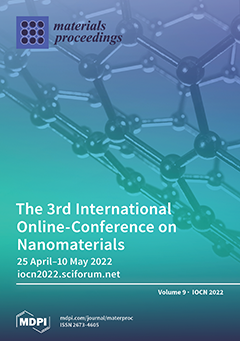Carbon nanomaterials (CNMs), such as single-walled (SWCNTs) carbon nanotubes, multi-walled carbon nanotubes (MWCNTs), and fullerene derivatives, are considered promising agents for the delivery of pharmacological drugs to target organs, including antitumor chemotherapy and theranostics. However, the question arises about CNMs’ possible effects on
[...] Read more.
Carbon nanomaterials (CNMs), such as single-walled (SWCNTs) carbon nanotubes, multi-walled carbon nanotubes (MWCNTs), and fullerene derivatives, are considered promising agents for the delivery of pharmacological drugs to target organs, including antitumor chemotherapy and theranostics. However, the question arises about CNMs’ possible effects on the general toxic and immunotoxic effects of cytostatic preparations when they are administered mutually. This work aimed to study the combined effects of cyclophosphamide (CP) intoxication and oral CNM administration in male Wistar rats. In two experiments lasting 16 and 35 days, MWCNTs, SWCNTs, or polyhydroxylated fullerenol (PHF60) were administered to control or treat CP rats, at a dose of 0.1 mg/kg of body weight daily prepared as dispersions in drinking water. The lethality and integral parameters of the rats were assessed; the content of erythrocytes and leukocytes, biochemical indicators, levels of cytokines, chemokines, and growth factors was measured. In the first experiment lasting 16 days, the consumption of both MWCNTs and SWCNTs led to an almost two-fold decrease in mortality caused by the administration of CP. In the second experiment lasting 35 days, a similar decrease in mortality was noted for SWCNTs; the capability of MWCNTs and PHF60 to increase the survival of animals was also pronounced. The administration of MWCNTs, SWCNTs, and PHF60 to the animals reduced the immunotoxic effects of CP, resulting in increased lymphocyte counts and a correction of the imbalance between cytokines and chemokines/growth factors, including IL-4, IL-13, IL-17A, IFN-g, IL-18, GM -CSF, GRO-KC, IL-12p70, IL-1b, IL-7, TNF-a, and VEGF. Thus, various CNMs, when administered together with CP, caused a partial abolition of their general toxic and immunotoxic action, which can be explained by the available literature data on the ability of CNMs to enhance the mobilization, migration, and adhesion of blood cells and trigger immune responses.
Full article



